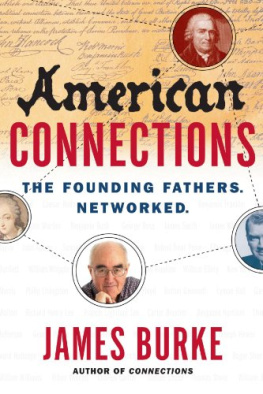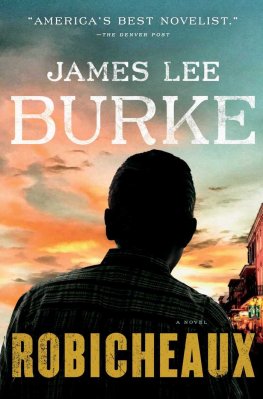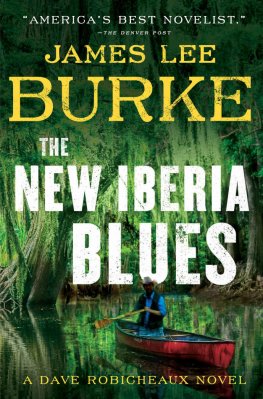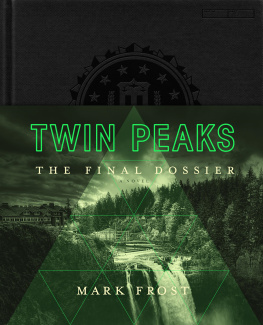
ALSO BY JAMES BURKE
Circles
The Knowledge Web
Connections
The Day the Universe Changed
The Axemakers Gift (with Robert Ornstein)
The Pinball Effect

SIMON & SCHUSTER
Rockefeller Center
1230 Avenue of the Americas
New York, NY 10020
www.SimonandSchuster.com
Copyright 2003 by London Writers
All rights reserved, including the right of reproduction in whole or in part in any form.
Simon & Schuster and colophon are registered trademarks of Simon & Schuster, Inc.
Designed by Jaime Putorti
Manufactured in the United States of America
10 9 8 7 6 5 4 3 2 1
Library of Congress Cataloging-in-Publication Data
Burke, James, 1936
Twin Tracks : the unexpected origins of the modern world / James Burke.
p. cm.
Includes bibliographical references and index.
1. Civilization, ModernHistory. I. Title.
CB358.B88 2003
909.08dc21
2003052628
eISBN-13: 978-1-439-12875-6
ISBN-13: 978-0-743-25810-4
ISBN-10: 0-7432-5810-X
ACKNOWLEDGMENTS
I should like to express my grateful thanks to Carolyn Doree for her peerless assistance in research.
To Madeline
CONTENTS
INTRODUCTION
Heading confidently for Japan, Columbus unexpectedly bumped into America, and Western knowledge went down the tubes. What was the New World doing there, when it didnt figure in the Bible or Aristotle? Not to mention its thousands of never-before-seen plants and animals. Intellectual panic followed. If the classical authorities were wrong about something as big as this, whose word could you trust any more? A hundred years of global exploration later, the problem had grown too big to ignore, so in 1619 Ren Descartes came up with a way to verify data through methodical doubt and reductionism: Question everything, and get down to detail; reduce all problems to their basic components; learn more and more about less and less.
Descartess approach generated the first specialist scientific research, which, in turn, triggered the Industrial Revolution and, with it, Adam Smiths idea that output was increased if the different stages of production were divided among different workers.
Reductionism and the division of labor have given us the highest standard of living in history. They have also brought socially unsustainable rates of innovation and population growth, and the kind of specialist thinking that makes it difficult to see beyond the end of your Ph.D. As a result, commercial-secrecy-shrouded research labs, working on everything from new pesticides to smart bombs, launch their latest successes onto an unsuspecting market, and when these new products bump into other equally unexpected noveltiesbecause of the way the world is networkedthe result often causes unforeseen ripple reflects. For instance, Edisons electric light threatened the gaslight business, which was then given a temporary reprieve through the invention of the incandescent gas mantle by Auer von Welsbach, whose mantle research also revealed the existence of the rare earth neodymium, later available to dope the crystal for the first laser (itself fundamentally based on the electronic behavior of one of Edisons light-bulbs).
Everything is connected. As you read these words, somewhere someone youve never heard of is doing something that will sooner or later bring change to your life. And sometime in the course of the next twenty-four hours youll do the same to others. None of us is untouched by the swirl and eddy of serendipity that drives human endeavors at all levels from quantum chromodynamics to painting your house.
In the past, the ripples took longer to spread because we were few and communication was slow. But the process was essentially the same as it is today. No decision, or course of action, escapes the effect of chance. For example, at the Battle of Hastings in 1066, if the English instead of the French had used the new stirrup to field mounted shock troops, and thus were victorious, this book would have been written in a form of English unaffected by the post-Hastings French invasion of England, and the text would look more like: a Frencyscan ahton wlstowe geweald (the French won).
Until recently, reductionism discouraged the cross-disciplinary, connective view of events because we lacked the means to gather and cross-refer the very large amount of data that would have made such an approach feasible. So we tended to organize history as we organized knowledge: in specialist terms, boxed into separate, straight-line, thematic structures. And yet the most cursory examination reveals this is not the way things happen. For instance, as this book shows, the emergence of stealth aircraft came not so much from earlier work in the field of aeronautics as from crystal-diffraction studies and audio recording tape technology. Above all, like everything, stealth technology was the end product of a series of human encounters, each one as accidental as the last.
The point of looking at history like this rather than in the traditional way (in terms of themes, or Great Moments, or leaders-who-showed-the-way) is because it offers a postreductionist systems approach to the turbulent modern world in terms of the whole rather than the parts. And because the more we recognize that we are all linked by encounter, from one end of the planet to the other, the better.
The reason I have straitjacketed the serendipity into twenty-five tales, each with a common beginning and a common end but different middles, is because there are intricate and fascinating patterns to be made out of the chaos of history.
I like the look of this particular pattern. I hope you do, too.
HOW TO READ THIS BOOK
Each chapter opens with a paragraph on the trigger event that kicks off the twin-track storylines.
Track One then runs, on successive left-hand pages, until: End Track One.
At this point, dont turn the pages to see the chapter ending unless youre one of those people who likes to go to the back of the book and see who did the crime before you start the thriller.
Return to the beginning of the chapter and this time read Track Two, which runs only on the right-hand pages, until: End Track Two.
Read the chapter ending.
Repeat as required, or until the onset of sleep.
ONE
1804: ATTACK ON TRIPOLI TO FISH STICKS

T he first time the United States directly attacked Tripoli was at 9:47 P.M. on September 4, 1804. Under the watchful eye of the USS Constitution, the fireship USS Intrepid, packed with gunpowder and shells, sneaked into Tripoli harbor and blew itself up. This incursion was in response to four years of attacks by Tripoli pirates on American Mediterranean shipping, with the loss of one American ship and her three-hundred-person crew, at the time of the attack languishing in Tripoli jails (and, soon after, released).
TRACK ONE
The man controlling events that night, and in overall command (of the Constitution, three schooners, and eight other ships: a total of 156 guns and 1,060 sailors), was the bad-tempered Commodore Edward Preble, a veteran of the War of Independence. Preble had been ordered to make his base at Valetta on the island of Malta but, for various reasons, preferred Syracuse on the island of Sicily. Malta was British at the time, which might have had something to do with Prebles Sicily decision. At one point, Preble and his fellow officers dined with a visiting (and rather inquisitive) Brit, who, unknown to Preble, was working as spy and dispatch-writer for the Governor of Malta, Alexander Ball; Ball, a naval officer (and friend of Nelson), was an old hand at running ships and islands but less good at prose. The scribbler in question had left England for Malta for reasons of health and was, by this time, trying (and failing) to kick his opium habit, while continuing to pen the stuff that would make him one of the most famous of all Romantic poets: Samuel Taylor Coleridge. In 1805having failed to give up drugs and yearning for the drizzleColeridge left Malta for London, via Rome, where he heard the news that Napoleon had him marked for assassination because of some earlier article hed written in the
Next page





















